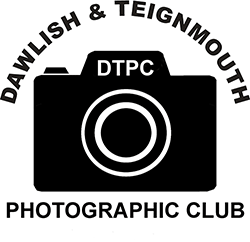
If there was ever a photographer who suffered for their art, it has to be Ollie Taylor. At his talk to the Dawlish & Teignmouth Camera Club, Ollie explained how he transitioned from landscape photography into night photography. This change of direction has seen him travel the world for months at a time, but it has come at a cost, namely foregoing sleep, in order to capture the skies from twilight through to sunrise.

Ollie started his photography journey in 2003 with landscape photography, but got hooked on night photography during a month-long trip to Iceland at the end of 2010. Despite having a full-time job in architecture, Ollie knew he wanted to concentrate on photography which allowed him the creative freedom and being out in nature that his office job did not. He slowly developed his own technique for capturing sharply focussed foreground landscapes against starry night skies and in early 2014 he set up the first, structured landscape night sky (nightscape) and landscape astrophotography workshops of their kind.
In his quest for striking images of the Milky Way and the Aurora Borealis, he has also captured other night-time phenomena, including a Lunar Bow over Gulfoss Waterfall in Iceland; seldom-seen ‘mother of pearl’, nacreous clouds over Lofoten Island and a shooting star (meteor) over the Dolomites – this image was actually picked up by NASA and shared. His breathtaking images have gained him awards, international recognition and numerous magazine articles. Along the way he has endured real hardships, sometimes carrying up to three cameras, three tripods and several lenses with him as he trekked up a mountain to his chosen location. He has stayed out for hours at a time in all sorts of wintry conditions just to get a shot. One example of his dedication was to capture the Milky Way over Dunnottar Castle, which is only achievable for four weeks of the year (April is the best time) and it has to be shot between 4-5am and all this is dependent on whether the skies are clear.
Over the years Ollie has used various camera brands such as Canon, Nikon and Sony. He also uses a tripod and tracker to trace the path of the stars and useful planning apps such as Photopills and Stellarium. To edit and process his images for exposure blending, Ollie uses Photoshop and Lightroom. He also advised against using any camera over 24 megapixels for nightscapes as they would be more prone to show ‘noise’ in the picture.
An unfortunate knock-on effect of the pandemic has forced Ollie to postpone his overseas workshops this year, so he has used the time at home to consolidate his knowledge and experience to provide digital download workshops on Landscape Astrophotography for Beginner and Intermediate levels. The step-by-step process of How to photograph the Milky Way, is supported by video post-production sessions on Lightroom and Photoshop.
Inspired by Ollie’s talk and discovering that the South-West is one of the best places to photograph the Milky Way, many members of the camera club will no doubt be heading out to photograph the night skies.
If you are interested in joining the club, which has a packed programme for the year of guest speakers, competitions and useful training session, see the Dawlish & Teignmouth Camera Club calendar.
